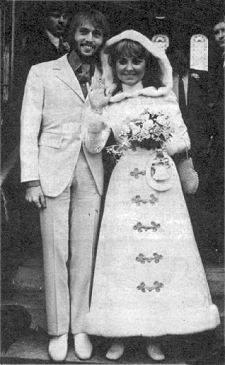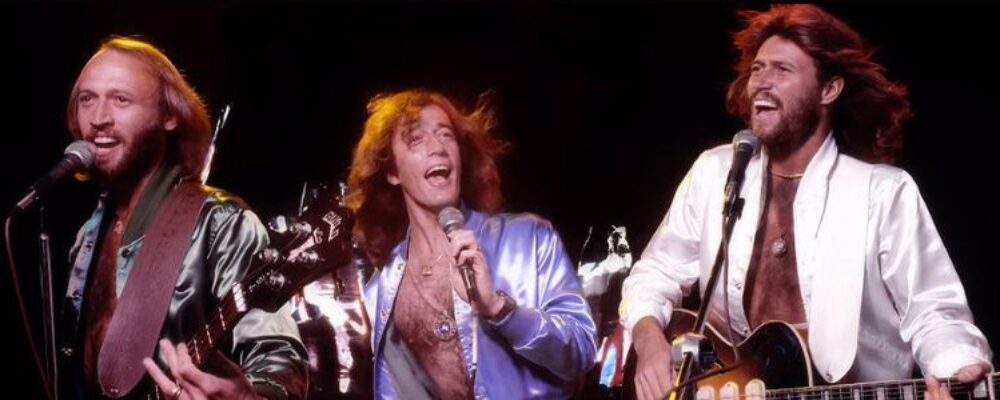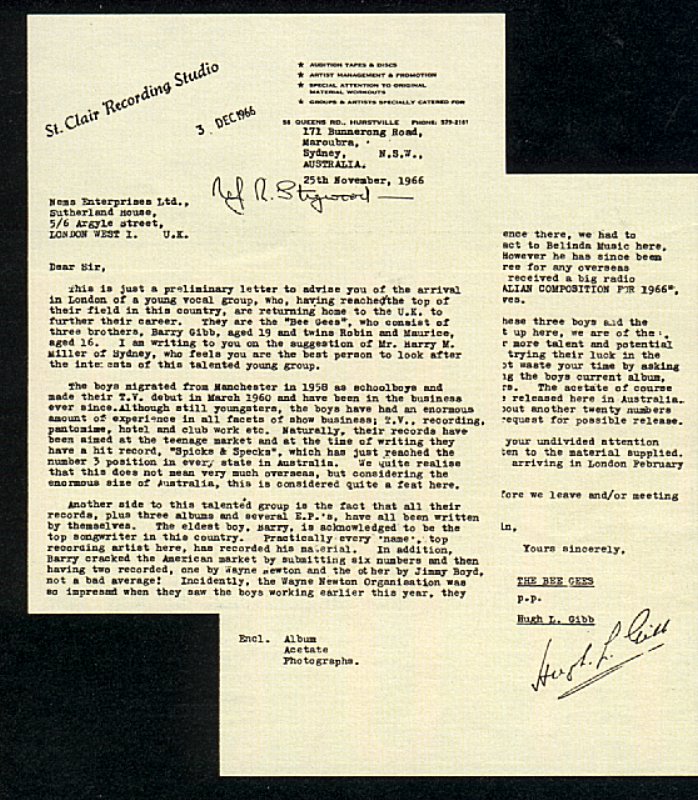Festival Records wouldn’t do anything more for the group.
And it was at this time that the family began thinking of moving back to England.
In March 1966 there was the release of “Cherry Red” right before the label switch that took place in May when they moved to Spin ( Nat Kipner).
Nat was convinced the Bee Gees could be successful but a man called Ossie Byrne really brought them at the turning point of their career.
Byrne owned a little studio at the back of his butcher’s shop in Hurtsville, a suburb of Sydney.
The boys could use his studio and didn’t have to pay a penny as at Festival Records you could only get 2 hours at the time.
Ossie gave them the opportunity to use the studio as long as they liked. A day and night just what they liked, all for nothing.
So they got more and more experience recording and they also did “Spicks And Specks” which became number one in Australia as they left, November 25th. 1966.
It was also November when the group released the second Australian LP, named for the single.
Their wish to leave for Britain became bigger and bigger and they had found out to be good composers whenever they’d get enough time to work.
They talked with Ossie about leaving for several weeks already and then informed their parents..
Hugh and Barbara weren’t happy as they knew it wasn’t that great, the country they came from.
Hugh at one time thought of hiding their passports to prevent them from leaving but after some time one decided going back was the best thing to do after all.
Just before leaving Hugh sent a letter to Brian Epstein who passed it on to Robert Stigwood.
Robert received it December 3rd.
Finally at this point there came some recognition for the boys in Australia
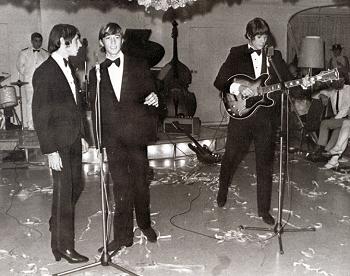
On the ship back to England
They became best group of 1966 and Barry won the prize for best songwriter.
Being 17 years old he had already a very impressive past as a songwriter.
People wondered how a boy at 17 was able to write such emotional love songs.
Many Australian artists recorded Barry’s songs.
Amongst others there was the group Steve & The Board of Steve Kipner, son of Nat Kipner.
And drummer of the band had been Colin Peterson for some time who would later become one of The Bee Gees!!
So just before leaving Australia the group sent some material for their first album and tapes like “Mrs. Gillespie’s Refrigerator”, “Deeply Deeply Me” and “Gilbert Green” to some record people in England.
Stigwood remembers that on those tapes were songs which would become big hits some later.
At the time they left Australia they weren’t all bachelors anymore.
Barry had met Maureen Bates and her parents in Sydney they were 16 at that time and finally married much too young something they both in fact didn’t want to but they just were looking for security and safety.
From the moment they got married it went wrong and it was like a prison for both of them.
Barry:‘I think it gave her more distress than me’.
After a year or so they left each other and finally divorced in 1970.
Before the family left Australia Leslie, their sister got her first baby: Bernice. January 4th. they sailed of and during the trip they performed on the Fair Sky.
During the journey of about 6 weeks the boys did a lot of writing.
According to Maurice lots of the Bee Gees First album was written on the ship like “One Minute Woman” and “Turn Of The Century”.
Also Robin remembers that parts of “To Love Somebody” were written on the ship but it wasn’t finished until back in England.
The boys worked their way over by performing.
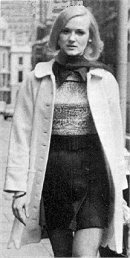
Maureen Bates
At the moment of their departure Festival Records made another move by trying to prevent them to leave the country using a court order.
Not a nice thing to deal with but it just made the boys even more determined and they thought: just wait and see, we’ll show them!
Col Joyce was one of the few Australians that had said: this is the only group that can actually make it overseas. And it only took a few months before the Bee Gees proved Col to be right and the rest of the Australian music industry to be wrong.
During their trip to England the brothers saw a big part of the world and while they made the outward journey as children, they where almost adults when they got back in England.
“It was on the 6th or 7th of February”, according to Barry, “when we reached Southampton.
The first night we stayed at a gloomy hotel in Hampstead and immediately after that we could move into a house in Hendon”.
Soon after that a certain Mr. Stigwood called them to get in contact with the Bee Gees.

Robert Stigwood
Stigwood:“I invited them at my office and was surprised at how relaxed they were.
Polite but very calm and they made lots of jokes.
I like their sense of humor and as well in doing business as on an personal level we became very good friends”.
Molly Hullis, receptionist at Stigwood’s office who later became Robin’s first wife, remembers that first meeting very well. “they came to the office in the afternoon soaking wet from the rain wearing rather out of date clothes and I thought: here’s another group that’s going to be trouble”.
The guitars of the boys were collected at Hendon and they auditioned in the basement of the Saville Theatre playing a couple of their songs.
That same afternoon, after the audition, Stigwood asked the boys to return to his office with him and told them: “We are willing to offer you a contract for 5 years”.
Stigwood had met the three boys, listened to them auditioning and offered them a 5 year contract all in one day! Boys who would become the most popular and successful group since the Beatles.
It was a dream come true and it hit bulls eye.
If you realize how many promo tapes are made and send every day, you can’t help but wonder how it is possible that a not very successful bunch of boys from Australia who just send a couple of songs to the Beatles’ management manage to score a 5 year contract.
The Gibbs returned to England with a couple of hundred Pounds in their pockets and within three weeks they landed an exclusive contract that would make them millionaires.
On the 24th of February 1967 the contract was signed. Colin Petersen At once the first single was released on Roberts Reaction Records but the song didn’t make a big impression in England.
It did a lot better on the mainland of Europe where it instantly became a big success, also in the Netherlands!!
In the meantime Vince Melouney became a Bee Gee as well as drummer Colin Petersen.
Vince, at 22 was already recognized as one of Australia’s premier guitarists when he left Australia in 1966 to go to England.
He was working for Simca Motors in England when the Gibbs asked him to join.
Actually Vince joined after Colin who had been busy with two careers already, music and acting.
His screen credits included “Smiley”( 1957 when he was 9), “The Scamp” ( 1959) and “A Cry From The Streets” ( 1960).
His musical wanderings had led him to the Steve And The Board group as well as studio sessions with the Gibbs and he emigrated to England at about the same time as the Gibbs and when he reclaimed his acquaintance with the brothers he was living in a flat with Bill Shepherd , an arranger who had also worked with them in Australia already.
And so also Shepherd joined the party to replay his role as arranger and now the group was complete.
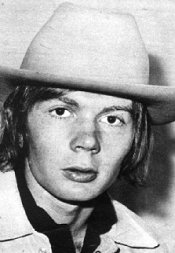
It was on the 14th of April that they released their single: “New York Mining Disaster 1941”.
The boys got their inspiration for writing this song sitting in the staircase ( with lots of echo) of Polydor Records.
Maurice: “The whole atmosphere was of being in a mine hole and we were also inspired by the Aberfan mining disaster in Wales which had taken place about half a year earlier in October 1966”.
There actually had also been a mining disaster in New York but that was not in 1941 but somewhere in 1939 according to Robin.
Maurice: “There’s a lot of weird sounds on this song like the Jew’s harp, the string quartet etc.
and of course the special way that Barry plays that guitar chord! Because of his tuning when he plays the minor at the beginning of the song which is different from a conventional A Minor”.
Barry: ” It’s Hawaiian tuning , there they play the same way I do.
I got a guitar for my ninth birthday and the guy who lived across the road from us just came back from Hawaii and he was the one who taught me that tuning.
That’s how it started and I never changed”.
Maurice: “It’s a nice mixture when I play my conventional tuning together with Barry’s tuning because his open D and mine are different”.
The Bee Gees were off and running.
The audience at their concert debut was less than inspiring.
On the bill with Gerry And The Pacemakers and Fats Domino at London’s Saville Theatre in Easter Week they played for a shouting audience who wanted to see Fats.
Nine months later at the same theatre, the Bee Gees were met by the obligatory crowds of screaming supporters, because by that time they had followed the ‘Mining Disaster’ with a successful and brilliant album and a barrage of hit singles.
As 1967 progressed, the world spun faster and faster for The Bee Gees. “New York Mining Disaster” peaks at 12 in the U.K. and 14 in the U.S. charts. aville Theatre More performances follow like Top Of The Pop in May 1967.
In June they signed to Atlantic Records for 80.000 Pounds, the biggest deal to make for a group at that time. In the summer there’s the release of “Bee Gees First” one of the keynote albums of the sixties.
Fresh and original, capturing among its fourteen songs some of the Bee Gees’ most memorable work.
The album cover features a photo from the band by Klaus Voorman and it was co-produced by their Australian ally Ossie Byrne.
The album reached the top ten of for instance the U.S. and Britain and the boys started touring like to Scandinavia.
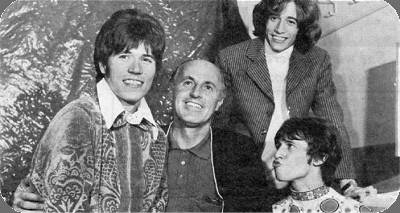
The brothers with their dad
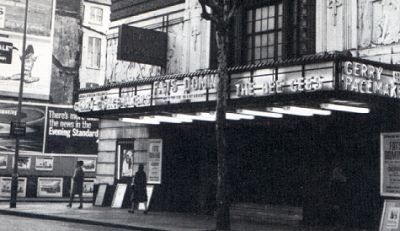
Saville Theatre
“To Love Somebody” was a summer single, another international success, and later in the year “Holiday” found the top twenty in America.
Then came a 45 that sold five million copies around the world!
This crucial hit was called “Massachusetts” and written in New York.
That was during their first trip to America in July 1967 when they did their first American TV performance in Dick Clark’s American Bandstand. During this U.S. trip they also met Otis Redding, one of their idols, and the song “To love Somebody” was originally written for Otis Redding.
He had planned to record it but died in a plane crash before he got the chance.
That year the boys even discussed the changing of their name into Rupert’s World but they never did.
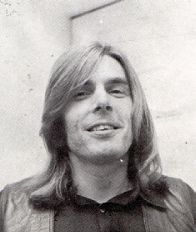
Dick Ashby
In that same year BG’s in Adams Row appears in the lives of the brothers to play a very significant part in it from that moment on.
Ashby, road manager for the Birds, another English group, got stuck with a van filled with equipment and no job when the band broke up.
Stigwood heard about it and contracted him as the Bee Gees’ road manager.
From then on Dick stayed with them and in 1970 became their personal manager.
Nowadays he is the key figure in the contact between the brothers and the rest of the world.
Problems arose for the group in the late summer of 1967 when the Home Office in England informed them that Vince and Colin would have to leave the country in September.
They were Australians and traveled to England on a visa.
Stigwood tried to fight this decision, but his request was denied
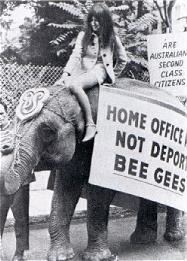
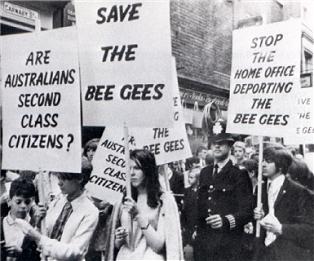
Fans protesting against the decision of the Government
This triggered even more action from him to force the Government to leave the group intact.
All this caused a lot of commotion and fans were protesting against the decision of the Government.
Fans chained themselves to the gates of Buckingham Palace, demonstrations in the streets of London, even an elephant walked in a demonstration which headed for Internal Affairs, a helicopter filled with fans in the garden of the Department of Finances and so on, and so on…
The whole of the press got very excited and all the posters in the city were very clear: Save the Bee Gees.
The brothers stated that they would rather settle in America, Spain or Germany than to send off two of their band members.
Finally the pressure mounted so high that the Prime Minister intervened and declared the Bee Gees to be national property and Colin and Vince got their immigration documents.
When Brian Epstein died, Stigwood suddenly found himself at the head of two major groups: the Beatles and the Bee Gees and he had to make a choice.
Apple of the Beatles, NEMS and Stigwood would join together to form a large company but after negotiations Robert decided to start his own company with the Bee Gees and Cream which would eventually result in establishing the Robert Stigwood Organization (RSO).
During the taping of Top Of The Pops Barry met the love of his life: Linda, who was a hostess of Top Of The Pops due to the fact that she won the miss Edinburgh elections.
Linda herself told that her meeting Barry had been predicted to her by a fortune teller.
That same day Barry invited her for a drink in a restaurant and asked her to join him at a party later that night at Robert’s place in Adam’s Row to celebrate the success of “Massachusetts”.
They met more often and soon enough Barry traveled to Scotland to meet up with Linda there.
They became a couple and in 1968 Linda started working in London as a model.
Shortly after that she and Barry were living together and she quit her job to be there for Barry and that’s how it’s been up till now
This was a glorious time for the young Bee Gees.
After a lot of hard work their dream about having success became reality.
They had become international pop stars, had a lot of money, got lots of attention and live luxurious lives.
Their career cost them their teenage years, but now they had all the money to act like a teenager again.
At the end of 1967 there was a new hit song “World” and they played one of the best concerts of their career so far: triumphantly they returned to Saville Theatre where they so disastrously started as the support act for Fats Domino.
Now their name appeared in big letters on the front and Bill Sheperd leaded their thirty musician strong orchestra while people like Paul McCartney were amongst the audience.
Of course the Gibbs had their share of nasty experiences like every family has.
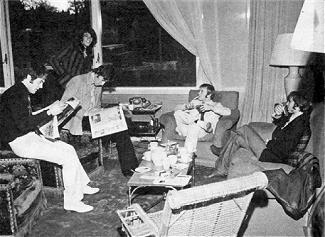
BG in Adams Row
In November 1967 Robin and Molly were involved in a serious train crash which they survived without major injuries but in which sadly dozens of people died.
It appears the song “Really and Sincerely” was based on Robin’s feeling due to this terrible accident.
1968 also started with a hit: “Words” got to number 1 in Germany and was a big success in several other countries.
In the first few months of that year they made their concert debut in America and received the astronomical amount of $ 50,000.- for two performances.
During their visit to America their second album was released. “Horizontal”, which contained several big hits again.
The group was supposed to star in and write a movie about the Boer War entitled: Lord Kitchener’s Little Drummer Boy that year too, but this project never materialized.
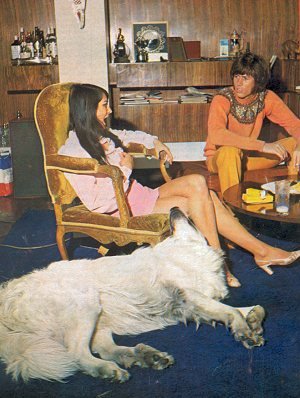
Barry, Linda and Barnaby
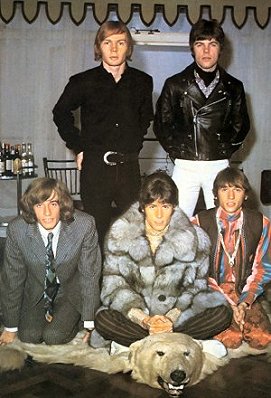
The Bee Gees
Back from America it was time for a European concert tour.
In every way it would be the wildest tour they’d ever experienced especially regarding their performances in countries like Germany.
The fans behaved wilder than ever and the police
The Netherlands too experienced their first major Bee Gees concert on Sunday the 6th of October 1968 in the Houtrusthallen in The Hague.
Wild but fantastic concerts, but the group also discovered that the fans could be dangerous sometimes.
Hysterical girls during lots of concerts and in Switzerland for instance thousands of children were waiting for them at the airport and their hotel had pour security which resulted in the place being trashed and they had to flee back to England.
One of the highlights during this period of wild and enthusiastic concerts undoubtedly was their performance on the 27th of March 1968 in the Royal Albert Hall in London with an orchestra of 67 musicians, an orchestra of the airforce consisting of 50 musicians and a big choir!
Dick Ashby: “It was their last concert of their third tour of England.
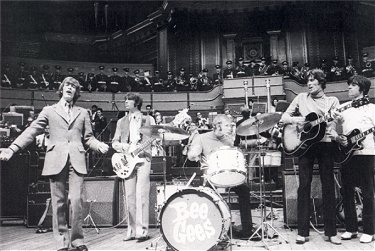
While they were singing: I Have Decided To Join The Airforce suddenly musicians of the airforce orchestra appeared through every door in the hall playing the song and amongst the public a choir suddenly started to sing Birdie Told Me etc, etc”.
After all the success suddenly a single didn’t became a hit song: “Jumbo” more or less was a miss and would it have changed anything if Robert would have chosen “Singer Sang His Song” for the a-side?
We don’t know.
Then some time for reflection and a holiday.
And again a smash hit: “I’ve Gottta Get A Message To You” reached number 1 in England again and got to the top 5 in Germany and it was the first song to reach the top 10 in America.
After their return to England, the past 16 months had been incredible for the group on top of which they also received an incredible amount of prices.
They were chosen the best group of 1967, received the Valentine’s Award for the group with the best future. In a short while they reached number 1 with 2 dozen hits in 15 countries, won the Golden Otto (German magazine Bravo), the Golden Lion from Radio Luxembourg etc. But they hadn’t really broken through in America and their American tour in the summer of 1968 had been somewhat disappointing except maybe for the shows in Forest Hill, New York and Los Angeles.
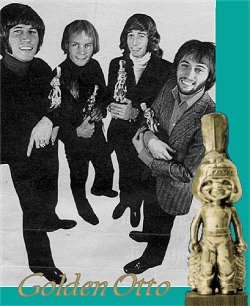
On June first 1968 Colin married his Joanne while Vince had gotten married in Australia earlier to Diane, they would separate later on.
Barry and Linda had been inseparable for a long time.
Robin had met Molly Hullis, receptionist at NEMS and Maurice became friends with pop singer Lulu.
In the summer of 1968 their third album was also released: “Idea”, the third album in little that a year!!
Amongst the songs the hit song: “I Started a Joke” about which Robin told that in writing the music for this song they got inspired by the engines of an airplane.
In the press rumors started circulating about problems within the group.
Finally it was Vince who left the group because he wanted to find his own musical identity.
The other Bee Gees were busy writing music for The Marbles and in the fall they started working in the studio for the first time without Vince to record their fourth album which originally was named An American Opera, then it got named Masterpeace and it finally became the double album called “Odessa”.
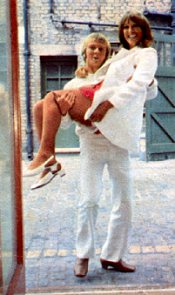
“Odessa” which also became the title track was a very long song about a shipwreck dominated by strings and acoustic guitar.
Somehow during the recording of the album the group lost contact with the original concept, whatever it was.
The album was recorded in New York and England and this continent hopping could well have contributed to the dissolution of the concept..
The felt-clothed double album “Odessa” contained a number of extraordinary songs.
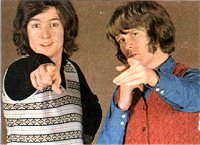
And in this period the brothers featured in the news more often.
You couldn’t pick up a pop magazine or you would read about the relations between the members of the Bee Gees.
The quarrels increased and the rift between the brothers grew wider.
The ambitious album project “Odessa” drowned in a sea of problems.
Barry: “Everything got out of hand and we didn’t know which way we were heading.
We’d never really finished the album.
It was our own production and we were very proud of it, but it all turned out different.”
Despite everything “Odessa” still became an amazing achievement.
The title song “Odessa” was mainly Robin’s work and it still is an important song for the group.
The beautiful “Melody Fair” became the title song for the movie Melody and reached number 1 in Japan.
Also remarkable were songs like “Marley Purt Drive” (area code 213) about an orphanage with 35 kids, “Lamplight” with lyrics partially in French and “Odessa” even contained three instrumental songs.
The album was released in the beginning of 1969.
Barry: “It marked a period of breaking up and we weren’t talking to each other, so we weren’t in the studio together half the time and weren’t as friendly toward each other.
The recording took three or four months which was a long time in those days.
Bee Gees First was done in a month.
It would be nice to re-master the album once and as a bonus maybe do a live version of some of the songs”.
The first single from the album: “First Of May” leaded to the biggest quarrel.
Because Robin thought the b-side: “Lamplight” would be released as the a-side and this triggered the rest.
Luckily in their personal lives the brothers all three had found a woman at their side, they would be a support to each of them.
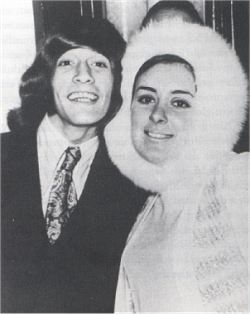
It was Robin who married his Molly on the 4th of December 1968.
Molly: “It wasn’t love at first sight, but it has grown.
He’s so romantic”.
The couple was already living together for some time.
Their honeymoon had to be postponed due to the fact that the boys were still recording in the studio.
It started going down hill with the group due to the quarrels and the speed and such.
Barry: “Robin was the one who suffered the most and he kept on taking pills.
He couldn’t stop anymore and was living in his own world.
Finally we split up”.
Molly, just married to Robin, had a hard time.
Hugh and Barbara tried to do what was best for Robin but it turned out to be a nightmare, for the family too.
That’s how the lives of the Gibbs started in the year 1969.
On the 18th of February 1969 Maurice married singer Lulu (real name: Marie McDonald McLaughlin Laurie) in the church of Gerrards Cross.
Lulu wore white boots, a white mink-trimmed coat and white mini dress and Maurice wore a white suit.
In the beginning of March the group performed in Top Of The Pops to promote “First Of May” and it would be the last performance with Rob before it al blew up.
On the 15th of March Robin announced he’d be leaving the group and talks followed with family, Stigwood and the lawyers.
To be continued.
Part five: History, starting in 1969.
